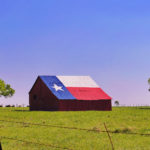New Videos Highlight Sugar’s Strides on Sustainability
The American Sugar Alliance recently hit the road, traveling from farm to factory to see sustainable sugar production in action. Along the way, we met farmers who care passionately about being good stewards of the land and workers who utilize cutting-edge manufacturing technology to produce high-quality American sugar.
Our first two stops included the sugarbeet industry in Minnesota’s Red River Valley and the sugarcane fields of South Florida, where sugar workers shared with us the incredible advances that allow our industry to produce sugar, sustainably.
 |
The root of a sugarbeet contains approximately 18 percent sugar. So what do sugar producers do with the remaining 80 percent of the beet? John Wagar has more than 40 years’ experience processing sugarbeets, and he took us behind-the-scenes at the American Crystal Sugar Company factory in Moorhead, Minnesota to answer this question.
Sugar producers use nearly every part of the beet. They process the wastewater from the sugarbeet into clean water and create co-products from leftover pulp. Factories even separate dirt from sugarbeets so that this rich organic material can be returned to the field.
The milling of sugarcane also results in a leftover fibrous pulp, called bagasse. Where some people might just see trash, though, sugarcane workers see an incredible sustainable energy source. U.S. Sugar primarily uses bagasse to fuel their boilers, using very little fossil fuels and helping drastically reduce emissions.
Advances in technology have helped sugar producers make strides in sustainability in the field as well. Did you know that U.S. Sugar owns one of the largest privately-owned WiFi networks in the world? It covers 270 square miles and allows tractors to navigate with absolute precision.
The commitment our industry shares to sustainability and the protection of our natural resources is incredibly personal. “As farmers, we understand that in order to be successful, you need to have a healthy environment,” says Gracelyn Byrd, agronomist for U.S. Sugar.
Stay tuned for more sweet videos from sugar farmers and workers from across the country.





